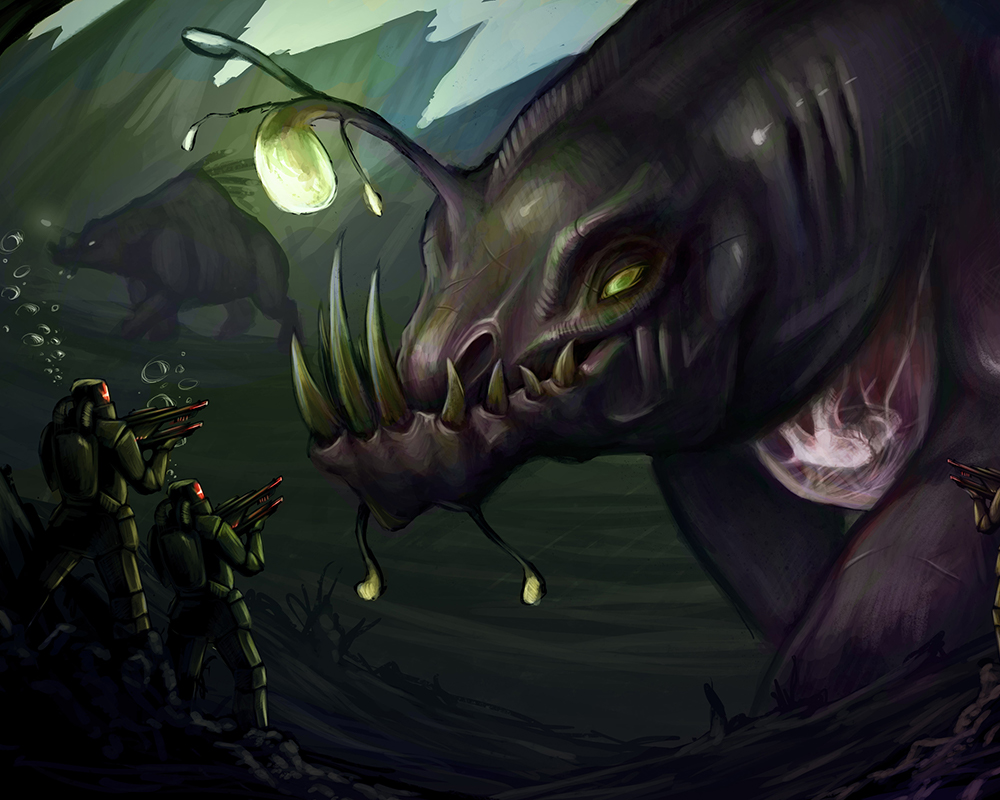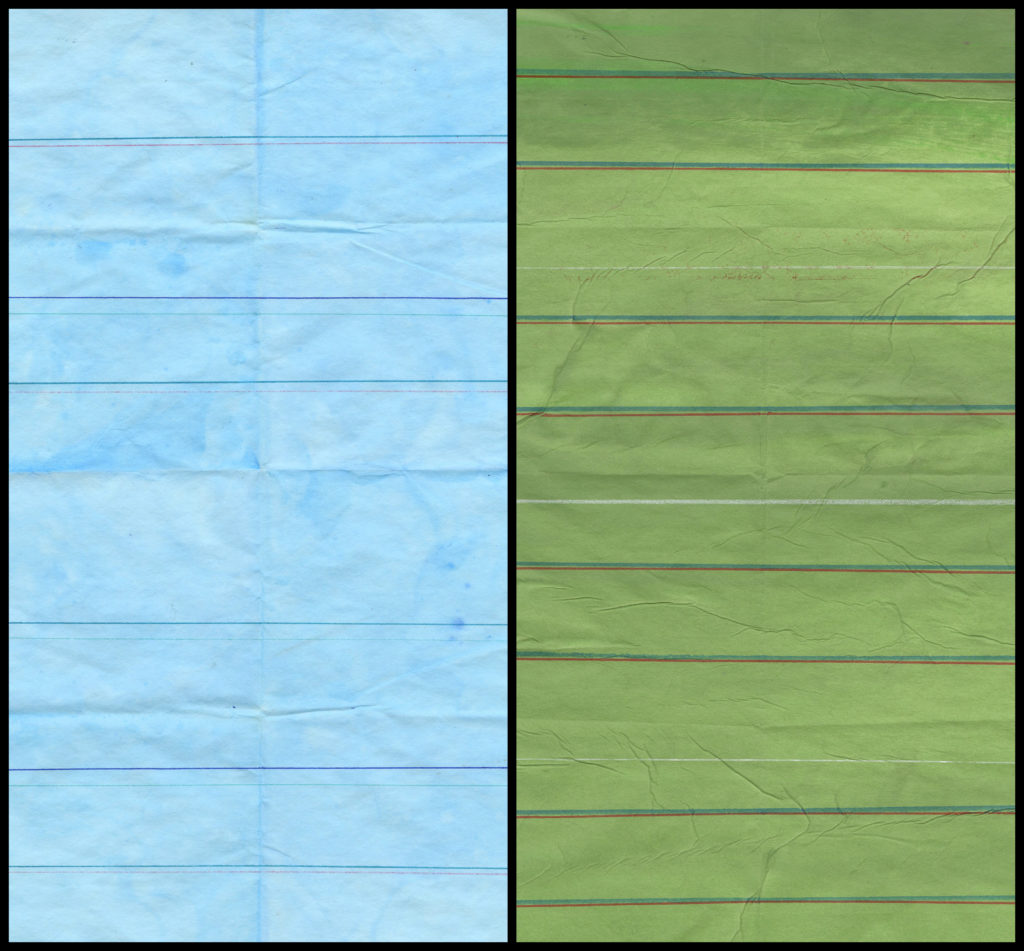
Late Summer Session: Game Art & Portfolio Prep classes for high schoolers
Tuesday, July 21st, 2020
Feeling a little creatively restless this summer?
Curious about art school, but not sure if it’s for you?
Our Pre-College classes, for students in grades 9-12, serve as a great introduction to art instruction at the collegiate level. All Pre-College classes are online this summer, which means you can take the classes from anywhere, and the instructors have lots of experience in using virtual platforms to provide individualized guidance, feedback, lessons, and demos.
It’s not a huge time commitment (Session III lasts only two weeks, July 27 through Aug. 7), and you’ll be working with art pros to gain practical skills as well as college credit.

Art (details) by Justin Phillips: Left: “Introductions, Knowing #1,” mixed media on mulberry paper, 9″ x 12″, 2020. Right: “Introductions, Knowing #2,” mixed media on mulberry paper, 9″ x 12″, 2020. Phillips, a member of PCA&D’s Foundation faculty, is teaching Portfolio Preparation: Level Up & Impact this summer.
If that sounds good …
You can check out all of our Pre-College Session III classes here, and see the full list of what’s coming this summer from our Center for Creative Exploration, as well as links to registration, here).
Introducing two of the Session 3 instructors:
- Meet Jen Kraft. She’s teaching Concept Art: Evolution & Application, highlighting both digital and traditional skills students can be expected to know to enter this highly competitive field.
- Meet Justin Phillips. A member of PCA&D’s Foundation-year faculty, he’s teaching Portfolio Preparation: Level Up & Impact, an opportunity to have personalized instruction that will strengthen students’ portfolios and help them develop a unique artistic vision.
What do you do professionally?
Jen Kraft: I work for a video game company in Maryland called Firaxis Games. At the moment I am a Visual Effects Artist. I am also a freelance illustrator and concept artist on the side.
Justin Phillips: I am an artist. I have a studio practice; I exhibit my work, and I teach at Pennsylvania College of Art & Design.
What are you most excited for in this session of your class?
Jen Kraft: I am most excited about helping students figure out which direction in art they might want to go in the future. I always think about how a class like (Concept Art: Evolution & Application) would have helped me so much when I started looking into concept art as a career path. While concept art isn’t something that is new, it is something that has recently become a huge hit among artists, especially those working digitally. If I’m able to help steer artists towards the right path towards being a concept artist this early in their artistic endeavors, then I will be one happy person. I love seeing people succeed, and find work doing what they enjoy.
Justin Phillips: I am really excited to help students learn more about who they are as aspiring artists and how to concisely express what is important to them. I believe that art instruction is part material skill-building and part learning how to tap into one’s creative vision and combining the skills to help bring their ideas to life. It is also important to help instill the importance of becoming excellent self-starters and dedicated explorers of the world of visual art. Artists are always learning new things and growing their skills and craft; it is a lifetime pursuit for knowledge.
What are some of the most important takeaways that prospective students should know about your class?
Jen Kraft: I want to make sure that these students have a better understanding of what concept art is, and what it is used for. There are a lot of misconceptions out there about concept art, and I want to make sure these students are better prepared for the industry’s standards.
Justin Phillips: Portfolio Preparation is a great class if you are developing and refining your portfolio to apply to an art college. I teach in the Foundation Department, so I have a lot of experience working with students that are starting their art education on the collegiate level. This experience has taught me a lot about what makes a portfolio successful and how to guide students on improving their portfolio. We will study what makes a successful portfolio, how to edit works in and out of your portfolio, and how to make your portfolio the best representation of you as an artist. There will be lectures, mock portfolio review/interviews, we will cover some basic photographing and editing your work for a digital portfolio application, and last, but certainly not least, we will make some work that is certain to bolster the student’s current portfolio.
Tell us about a piece of art in the subject or style of your class that had/has an impact on you.
Jen Kraft: I would have to say that the entire collection of Wayne Barlowe’s Expedition had a huge impact on me. The entire collection is an amazing feat of world-building and concepting on a large scale. Barlowe concepts an entire planet and its inhabitants. The collection includes 40 paintings and 100 black-and-white concept studies.
Justin Phillips: Well, I do not think there is one specific work of art or style. I think my life in the arts has taught me a lot of lessons and I am grateful to have opportunities to share what I know with the next generation of artists.
Tell us about the first art class you can remember taking. Any special moments you can recall?
Jen Kraft: I don’t think I can remember the first art class I took. I’ve been taking art classes pretty much all my life. The first art class I remember taking was in the first grade. My teacher allowed us to paint most of the time, and one time in particular she let us paint anything we wanted. I decided to paint my favorite character at the time, Reptar from Rugrats. I remember spending a lot of time painting it and making sure the lines were perfect. When I was almost finished with it, my friend next to me accidentally spilled a large container of bright yellow paint, and completely covered my painting. The painting was pretty much destroyed. That’s the first time I remember being so proud of something I made, only to completely lose it later. Who knows, maybe that helped me in being a concept artist since a lot of the work put into concepting is thrown out in the end, unlikely to be seen.
Justin Phillips: I grew up in a household with a lot of creative activity. My father studied art in college and he was an art teacher before starting his own photography studio. I grew up with a lot of artwork from him, his friends, and his classmates in our home. We were always making art or crafts and doing creative activities when I was a kid. I had a great and serious elementary school art teacher named Mr. Nicholson. I wish I could talk to him now. Living so close to NYC and reflecting on him and his vibe I am sure that he was immersed in the NYC art scene. This is a silly recollection but I remember stepping on a wet piece of clay and making an imprint from my sneaker into the clay. I cut the wet clay and put a hole in it and made an Adidas medallion for a necklace and I remember getting mad because a lot of my classmates followed suit. That was an early lesson about how to accept that as flattery and not to be mad. I haven’t thought of that experience in years. : )
What do you do for fun when you’re not teaching/working?
Jen Kraft: I play a lot of video games, partly for market research, but mainly for enjoyment! I love finding oddball indie games made in art styles not normally made in video games. There are a lot of truly fascinating and inspiring games out there. I also experiment with different kinds of arts and crafts, and seeing what other weird things I can make. If I see a trend making its rounds on the internet, I usually jump on the bandwagon and try it out with friends.
Justin Phillips: For fun… I like to spend time with my family and friends (even if it currently means video chatting) I like to read, cook, and watch silly TV or movies. I can’t wait for baseball to start back up.
Information on these and all remaining Center for Creative Exploration summer classes can be found here.
(Top art: Concept art by Jen Kraft, instructor for Concept Art: Evolution & Application in the Center for Creative Exploration’s Pre-College summer session.)
